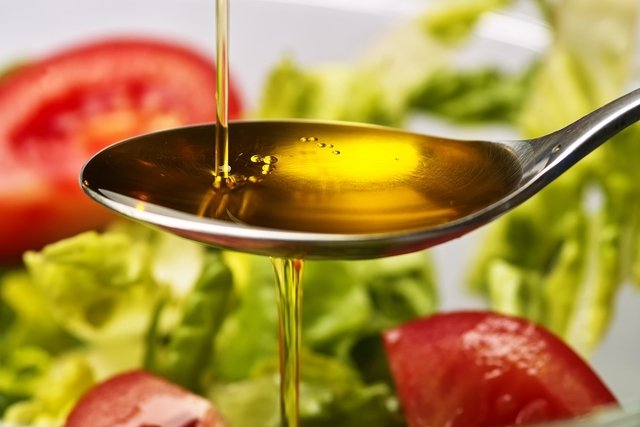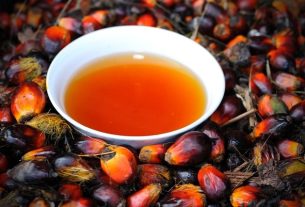The best olive oil is the one with an acidity of up to 0.8%, called extra virgin olive oil, this is because this type of oil, due to its lower acidity, has a greater quantity of good fats, better nutritional quality and more benefits for the health.
In addition to the health benefits and its culinary applications, to know how to identify a good olive oil in the supermarket, you need to know the main types of olive oil to better understand the recommendations for using these oils and their characteristics.

To identify a good olive oil, some observations must be made when purchasing, including:
- Give preference to extra virgin olive oil: as it contains more nutrients and lower acidity. When this is not possible, choose the Virgo.
- Choose olive oil with acidity up to 0.8%: the lower the acidity, the purer and better the quality of the oil.
- Choose pure olive oil, without mixing it with other olive oils or oils: This information can be found on the ingredients present label. Make sure the olive oil is not a mixture with refined olive oil or other oils.
- Take olive oils from the bottom of the shelf, stored away from lighting: Exposing olive oil to light and sun can oxidize monounsaturated fats and cause the olive oil to lose its nutritional qualities.
- Choose olive oils in dark and glass packaging: This prevents light from coming into contact with the oil and causing it to lose nutritional properties.
Another important information is to monitor the inspection carried out by bodies related to food safety, which evaluates the quality of different products and olive oils available on the market. This prevents the purchase of adulterated or fraudulent products, which harms the consumer.
Classification of types of olive oil
Olive oil is obtained from the fruit of the olive tree, olives. The types of olive oil differ by the extraction, refining mechanisms and temperatures used to extract the oil from the olives.
All of these factors affect the amount of good fats present in olive oil and the more good fats, the better the quality and the lower the acidity. In this way, olive oils are classified as:
In addition, there is also lampante olive oil, whose acidity is greater than 2.0% and, therefore, is not recommended for consumption, as it has an unpleasant taste and odor, in addition to providing no health benefits. This type of olive oil is normally used in lighting equipment. Before it can be consumed, lampante olive oil must go through a refining process and then mixed with other types of olive oil.
Therefore, whenever possible, you should prefer to consume extra-virgin olive oil in salads and to finish preparations, as it has more nutrients and good fats than other types of olive oil, in addition to being a purer type of olive oil that provides several benefits for the body. Learn more about olive oil.
Also watch the following video and see which oil is best for healthier cooking:
Bibliography
- RODRIGUES Marina, ROCHA Marta et al. Olive Oil and Health. Nurses. 15. 14-18, 2012
- OIL HOUSE. Olive Oil Classification. Available at: <http://www.casadoazeite.pt/Profissionais/Azeite-de-Marca/Classifica%C3%A7%C3%A3o>. Accessed on September 17, 2019
- MINISTRY OF AGRICULTURE, FISHERIES AND FORESTRY. Find out more about what to eat: Olive Oil. Available at: <http://www.drapc.min-agricultura.pt/base/documentos/azeite.pdf>. Accessed on September 17, 2019
- GARCIA ALVES, Ana Catarina. Analytical techniques for olive oil quality control. Internship Project, Polytechnic Institute of Tomar.
- OLIVEIRA Luis, OLIVEIRA Adelson et al. Variation in olive oil quality in olive tree cultivars. Bragantia. 71. 2; 202-209, 2012
- MACHADO Larissa, VIZENCI Roziani et al. ANALYSIS OF THE ACIDITY INDEX AND ACIDITY IN OLEIC ACID IN THREE OLIVE OIL-BASED PRODUCTS SOLD IN BRAZIL: TWO EXTRA VIRGIN OLIVE OILS AND ONE MIXED OIL. Proceedings – 5th FSG Research and Extension Congress. 5. 5; 55-57, 2017

Sign up for our newsletter and stay up to date with exclusive news
that can transform your routine!
Warning: Undefined array key "title" in /home/storelat/public_html/wp-content/plugins/link-whisper-premium/templates/frontend/related-posts.php on line 12
Warning: Undefined array key "title_tag" in /home/storelat/public_html/wp-content/plugins/link-whisper-premium/templates/frontend/related-posts.php on line 13




